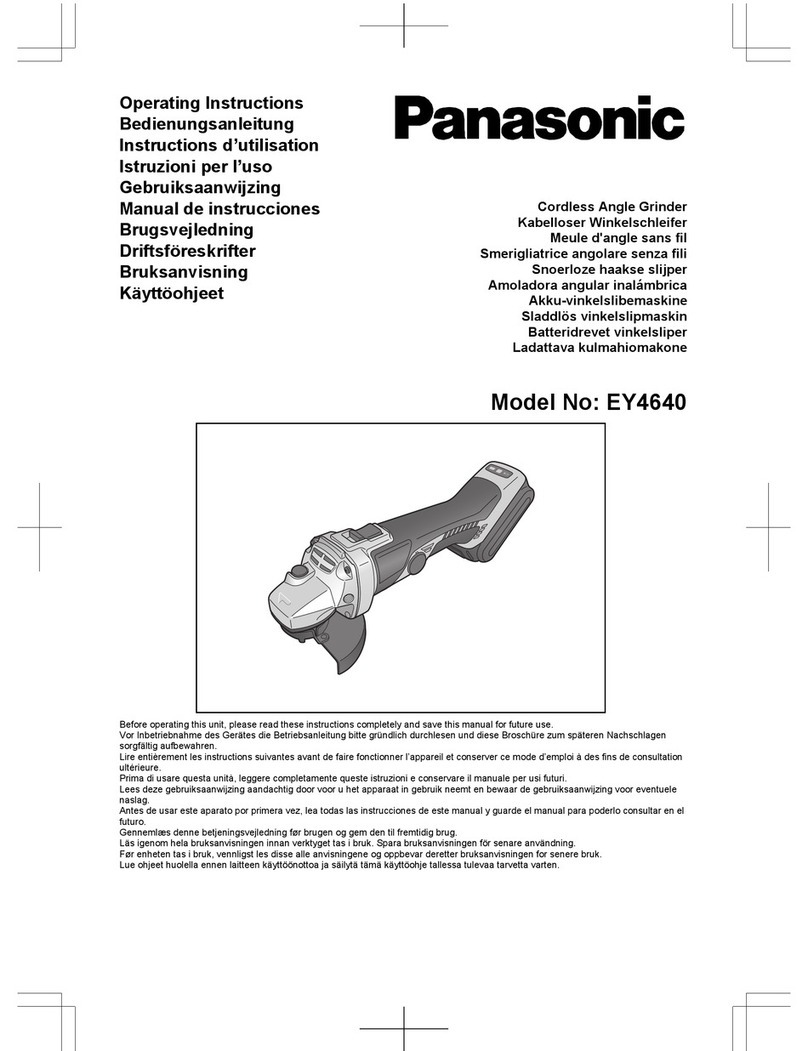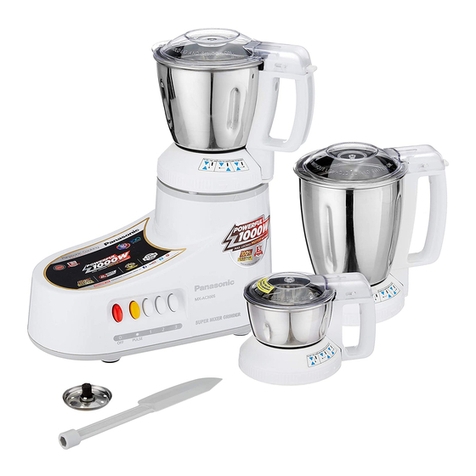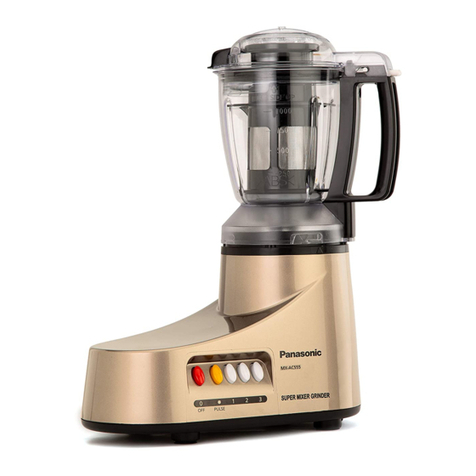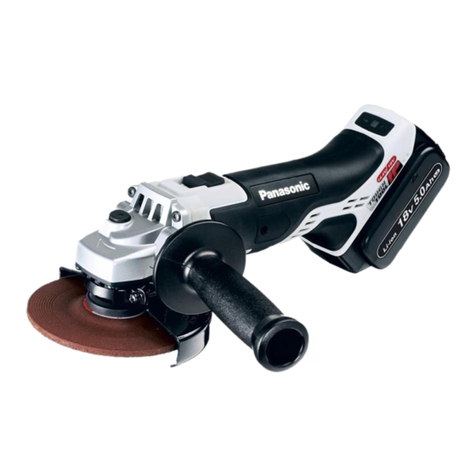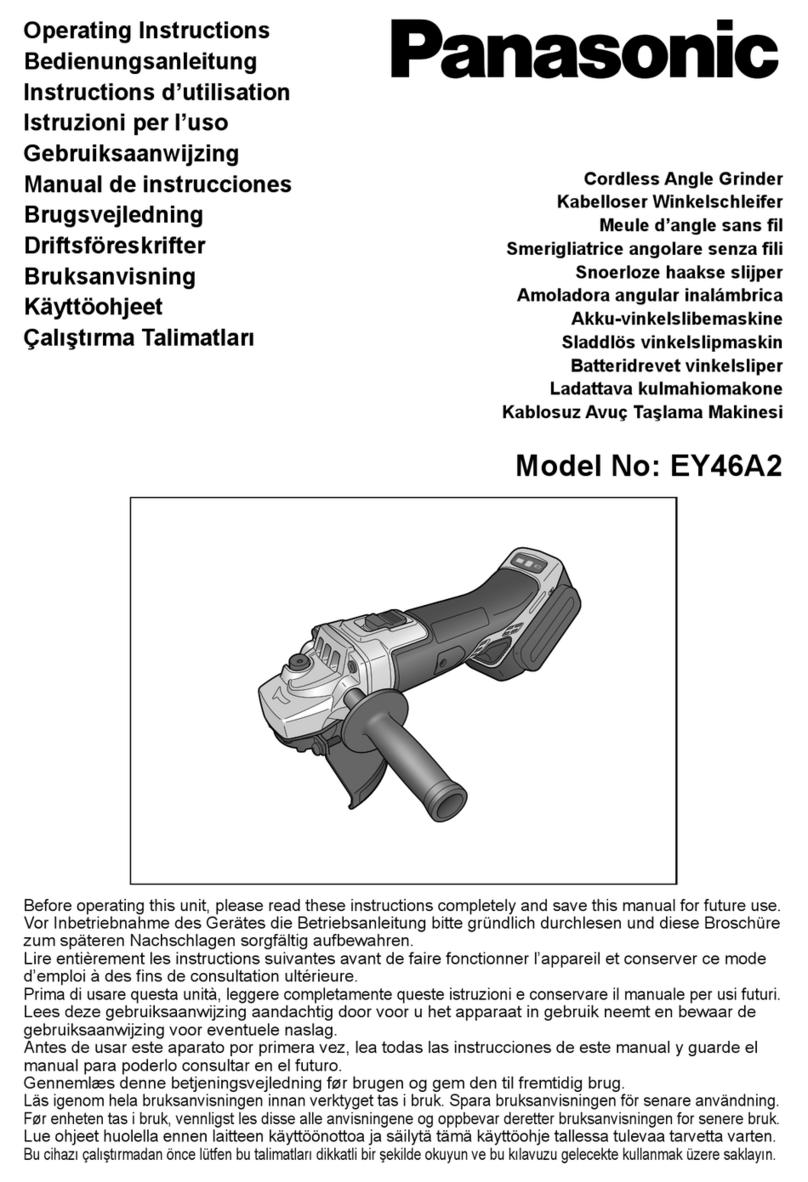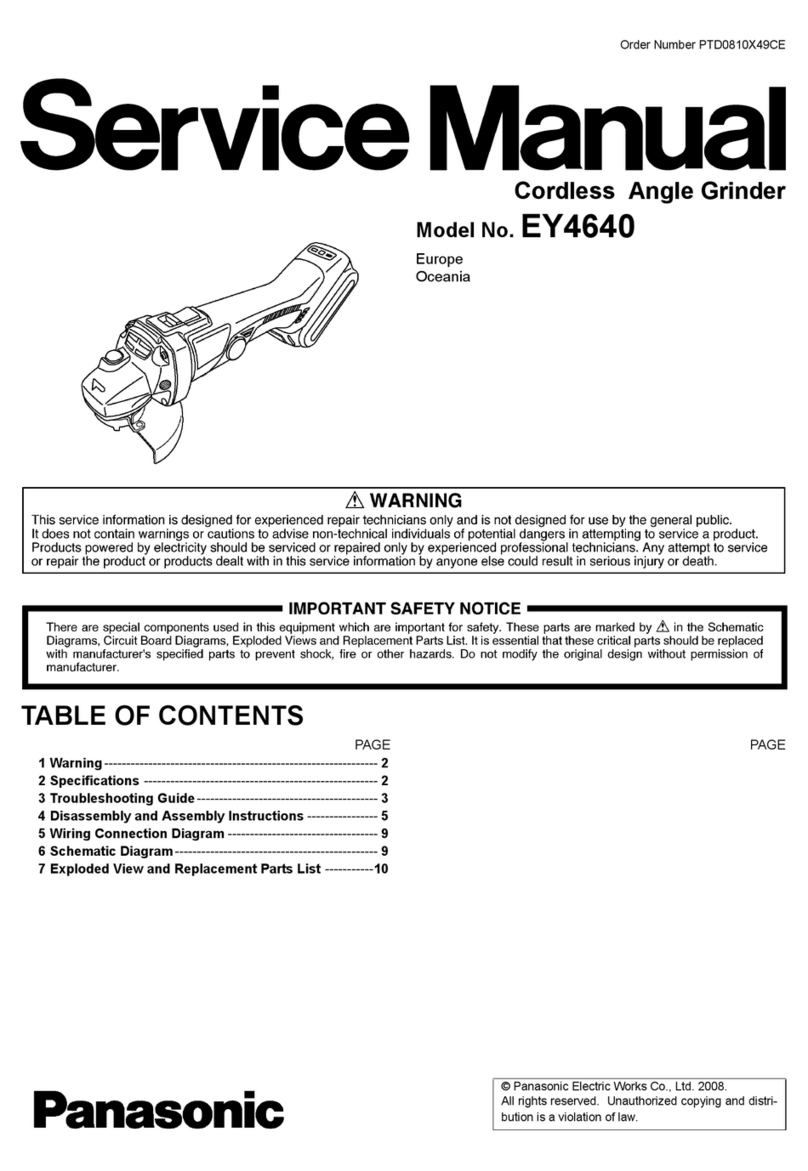
-
8
-
Further safety instructions for
all operations
Kickback and Related Warnings
Kickback is a sudden reaction to a
pinched or snagged rotating wheel,
backing pad, brush or any other ac-
cessory. Pinching or snagging causes
rapid stalling of the rotating accesso-
ry which in turn causes the uncon-
trolled power tool to be forced in the
direction opposite of the accessory’s
rotation at the point of the binding.
For example, if an abrasive wheel
is snagged or pinched by the work-
piece, the edge of the wheel that is
entering into the pinch point can dig
into the surface of the material caus-
ing the wheel to climb out or kick out.
The wheel may either jump toward
or away from the operator, depend-
ing on direction of the wheel’s move-
ment at the point of pinching. Abra-
sive wheels may also break under
these conditions.
Kickback is the result of power tool
misuse and/or incorrect operating
procedures or conditions and can be
avoided by taking proper precautions
as given below.
1) Maintain a firm grip on the power
tool and position your body and
arm to allow you to resist kick-
back forces. Always use auxil-
iary handle, if provided, for max-
imum control over kickback or
torque reaction during start-up.
The operator can control torque re-
actions or kickback forces, if prop-
er precautions are taken.
2) Never place your hand near the
rotating accessory. Accessory
may kickback over your hand.
3) Do not position your body in the
area where power tool will move
if kickback occurs. Kickback will
propel the tool in direction oppo-
site to the wheel’s movement at the
point of snagging.
4) Use special care when working
corners, sharp edges etc. Avoid
bouncing and snagging the ac-
cessory. Corners, sharp edges or
bouncing have a tendency to snag
the rotating accessory and cause
loss of control or kickback.
5) Do not attach a saw chain wood-
carving blade or toothed saw
blade. Such blades create frequent
kickback and loss of control.
Additional safety instructions
for grinding and cutting-off
operations
Safety warnings specific for Grinding
and Abrasive Cutting-off operations:
1) Use only wheel types that are
recommended for your power
tool and the specific guard de-
signed for the selected wheel.
Wheels for which the power tool
was not designed cannot be ade-
quately guarded and are unsafe.
2) The guard must be securely at-
tached to the power tool and po-
sitioned for maximum safety, so
the least amount of wheel is ex-
posed towards the operator. The
guard helps to protect operator
from broken wheel fragments and
accidental contact with wheel.
3) Wheels must be used only for
recommended applications. For
example: do not grind with the
side of cut-off wheel. Abrasive
cut-off wheels are intended for pe-
ripheral grinding, side forces ap-
plied to these wheels may cause
them to shatter.
4)
Always use undamaged wheel
flanges that are of correct size
and shape for your selected
wheel. Proper wheel flanges sup-
port the wheel thus reducing the
possibility of wheel breakage. Flang-
es for cut-off wheels may be differ-
ent from grinding wheel flanges.
5) Do not use worn down wheels
from larger power tools. Wheel
intended for larger power tool is
not suitable for the higher speed of
a smaller tool and may burst.
